7 Common Lawn Diseases in Minneapolis: Identification and Prevention
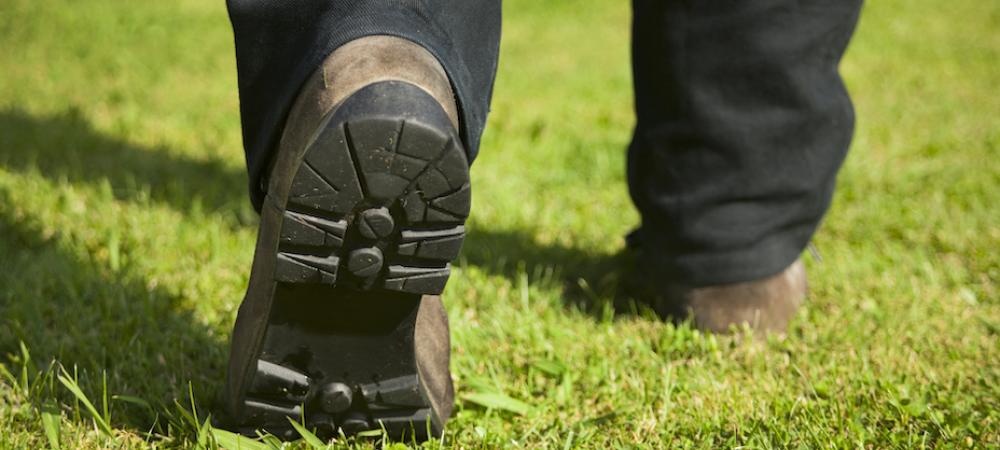
Maintaining a healthy and vibrant lawn is a labor of love for homeowners in Minneapolis. However, various lawn diseases can pose a threat to the lush greenery we desire. Recognizing the signs of common lawn diseases is crucial for effective treatment and prevention. In this blog, we will explore some of the most prevalent lawn diseases in Minneapolis, learn how to identify them and understand the conditions in which they thrive.
Brown Patch
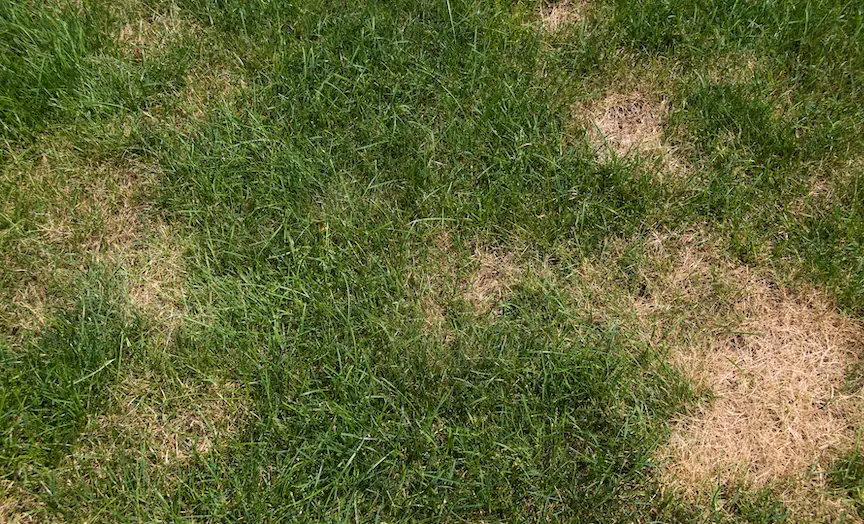
(Rhizoctonia solani)
Brown Patch is a fungal disease that affects cool-season grasses like Kentucky bluegrass and perennial ryegrass. It typically appears during hot and humid conditions, making it a common problem in the summer months. Brown patch lawn disease manifests as circular or irregular patches of brown, dying grass with a distinctive "smoke ring" at the outer edges. The affected turf may have a slimy appearance in the morning hours.
Prevention and Treatment
- Avoid excessive nitrogen fertilization, as it promotes lush growth and creates favorable conditions for the disease.
- Water your lawn deeply and infrequently, preferably in the early morning hours.
- Improve air circulation and sunlight penetration by pruning trees and shrubs surrounding the lawn.
- Fungicides can be used if the disease persists or if the conditions are highly favorable for its spread.
Dollar Spot
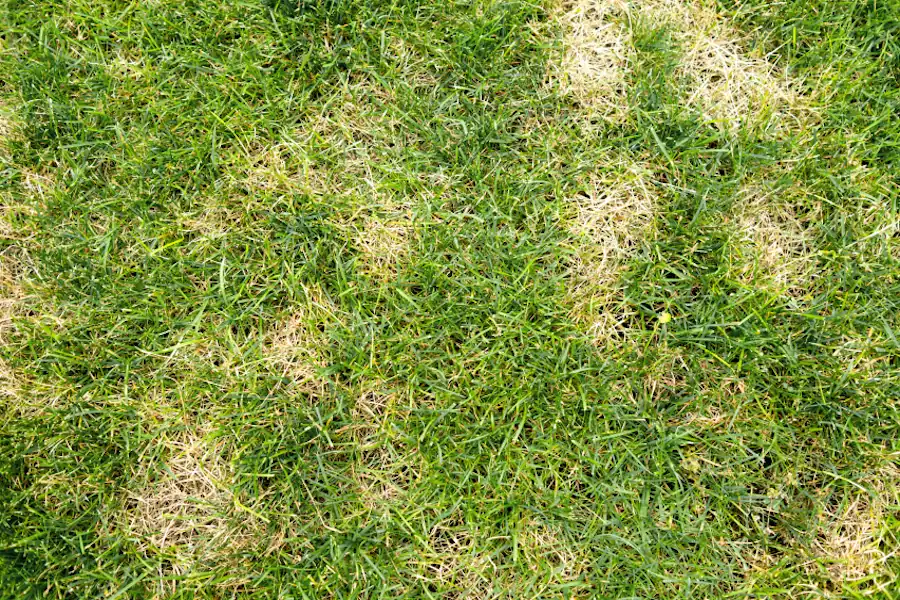
(Sclerotinia homeocarpa)
Dollar Spot is a widespread fungal disease that affects various grass species. It thrives in warm, humid weather and is often found in lawns that are stressed due to inadequate nitrogen levels, mowing too low, or excessive thatch. The disease is characterized by small, silver-dollar-sized patches of tan or straw-colored grass with distinct reddish-brown borders.
Prevention and Treatment
- Maintain proper nitrogen levels through regular fertilization, following recommended guidelines.
- Increase mowing height to reduce stress on the grass and promote healthier growth.
- Water deeply and infrequently, avoiding evening irrigation.
- Fungicides can be applied to control severe outbreaks or when conditions are highly conducive to the disease.
Snow Mold
(Typhula spp.)
Snow Mold is a fungal disease that occurs during winter or early spring when there is prolonged snow cover on the lawn. It affects both cool-season and warm-season grasses, causing circular or irregular patches of matted, straw-colored grass. The patches may have a pink or grayish appearance, and a fluffy, cotton-like fungal growth may be visible in wet conditions.
Prevention and Treatment
- Clear the lawn of leaves and debris before winter to prevent snow accumulation and moisture retention.
- Avoid excessive late-season fertilization, as it promotes succulent growth that is more susceptible to the disease.
- Improve drainage in problem areas to reduce moisture buildup.
- Fungicides are typically not necessary for Snow Mold control, as the disease usually resolves itself as the weather warms up.
Fusarium Patch
(Microdochium nivale)
Fusarium Patch, also known as Pink Snow Mold, primarily affects cool-season grasses and commonly occurs during cool, wet weather in late fall or early spring. It appears as circular or irregular patches of matted, straw-colored grass with a pinkish or reddish hue. The patches may have a slimy texture in moist conditions.
Prevention and Treatment
- Avoid excessive nitrogen fertilization in the fall, as it encourages succulent growth.
- Mow the lawn at the appropriate height to reduce stress on the grass.
- Improve drainage in problem areas to prevent moisture retention.
- Fungicides can be used in severe cases or when weather conditions favor disease development.
Red Thread
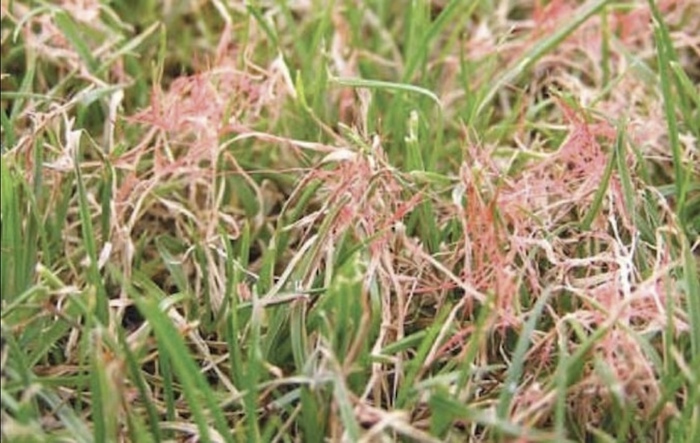
(Laetisaria fuciformis)
Red Thread is a fungal disease that affects cool-season grasses such as fescue, ryegrass, and bentgrass. It is commonly seen in humid conditions with temperatures ranging from 60 to 75°F. Red thread lawn disease presents itself as irregular patches of tan or pinkish turf with thin red or pink thread-like strands extending from the grass blades. These strands are actually the fungal mycelium responsible for the infection.
Prevention and Treatment
- Improve soil drainage and reduce excessive moisture by aerating the lawn.
- Avoid overwatering and allow the grass to dry out between watering sessions.
- Maintain proper nitrogen levels through regular fertilization, following recommended guidelines.
- Fungicides can be applied if the disease persists or when conditions are favorable for its spread.
Lawn Rust
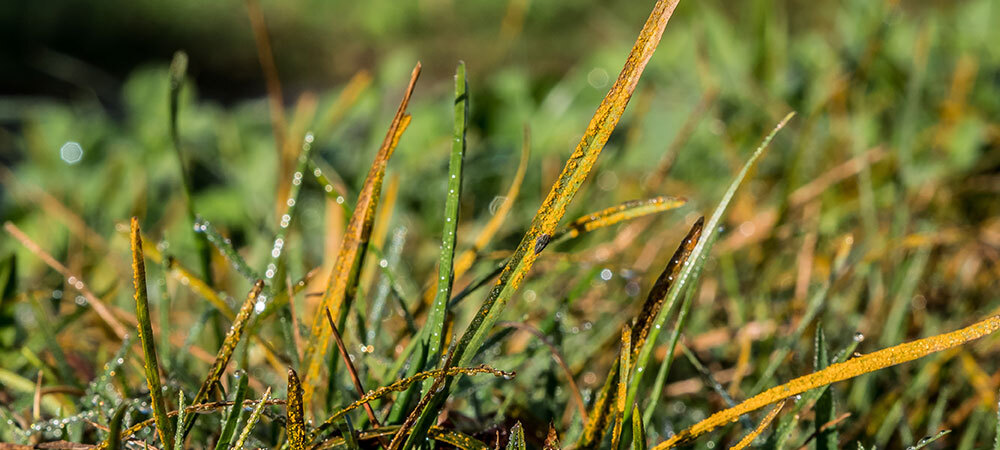
(Puccinia spp.)
Lawn rust is a fungal disease that affects various grass species, especially during late summer and early fall. It is more prevalent in lawns with poor nutrition and inadequate sunlight. Rust appears as orange, yellow, or reddish-brown powdery pustules on the grass blades. When touched, these pustules leave a rusty, orange residue on your fingers.
Prevention and Treatment
- Maintain proper nitrogen levels through regular fertilization, following recommended guidelines.
- Improve sunlight exposure by pruning trees and shrubs that shade the lawn.
- Ensure adequate soil drainage to prevent excessive moisture retention.
- Fungicides are rarely needed for rust control but can be used in severe cases or when conditions favor the disease.
Necrotic Ring Spot
(Leptosphaeria korrae)
Necrotic Ring Spot is a fungal disease that commonly affects cool-season grasses, particularly Kentucky bluegrass and fine fescue. It typically emerges in late spring or early summer when temperatures are between 60 and 75°F. The disease is characterized by the appearance of circular or crescent-shaped patches of dead or dying grass with a brownish or straw-colored center and a dark green outer ring.
Prevention and Treatment
- Improve soil drainage by aerating the lawn and ensuring proper water penetration.
- Avoid overwatering and maintain a consistent watering schedule, allowing the soil to dry out between watering sessions.
- Implement proper lawn care practices, including regular fertilization and mowing at the appropriate height.
- Reseed affected areas with disease-resistant grass varieties to restore the lawn's health.
Identifying and understanding common lawn diseases in Minneapolis is crucial for effective management and prevention. By recognizing the signs and implementing proper lawn care practices, such as appropriate watering, mowing, and fertilization, homeowners can minimize the risk of these diseases. Regular monitoring, early intervention, and seeking professional advice when necessary will help ensure a lush and healthy lawn throughout the year.
Call The Professionals
Instead of waiting for a lawn disease to infect your yard, call a professional lawn care company to help prevent turf diseases! If you are looking for disease prevention or a customized treatment plan, call Showcase Lawn Care in Minneapolis. Our team of experts knows how to recognize signs of lawn disease and give you the healthy grass you deserve!
